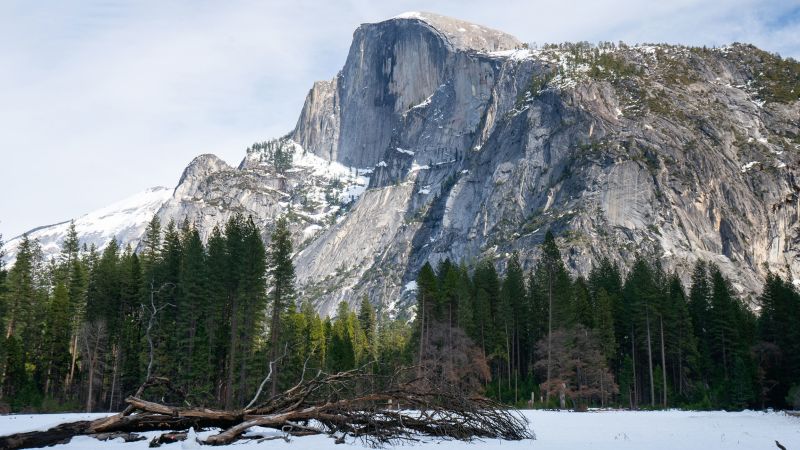The End of Glacier Lakes: Implications for the Future of the World Heritage Sites and the Sustainable Climate Action – An Israeli Case Study
Glaciers around the world are melting and leaving large pools of water in their wake. What is known as a glacier lake is formed from the meltwater filling the depression left by the glacier.
50 UNESCO World Heritage sites in North America are home to glaciers. A new study warns that glaciers in a third of them will disappear by 2050 due to carbon emissions warming the planet.
There are some of the largest glaciers in Europe and Central Asia and the last remaining glaciers of Africa on the list.
Resende told CNN that the report brings a powerful message that the World Heritage sites are icons for local communities and Indigenous peoples. “Ice loss and glacial retreat is accelerating, so this sends an alarming message.”
Fresh water supply for households, agriculture and industry downstream comes from glaciers that cover 10% of land. Normally, they take as long as a millennium to form and gain mass through snow or rain, then lose mass in the summer.
Tom Robinson, a co-author of the study and a senior lecturer at the University of Canterbury in New Zealand, said a glacial lake outburst is like an “inland tsunami.” He compared the impact to a dam collapsing.
Sea level rise will be affected by Shrinking glaciers. A 4-degree Celsius rise would raise the sea level by 6 inches, while a 1.5 degree Celsius rise would raise the sea level by 3.5 inches.
The report comes as world leaders gather in Sharm el-Sheikh, Egypt, next week for the UN-brokered international climate negotiations, where the focus will be on getting countries to commit to stronger fossil fuel cuts that would limit global warming to 1.5 degrees. They plan to adapt to worsening extreme weather events including heat waves, floods and storms.
We need to unite ourselves in order to achieve this 1.5 objective. This pledge is to take urgent action because the impacts might be irreversible.
If global temperatures don’t exceed 1.5 degrees Celsius, the other two-thirds can still be saved.
The Impact of Glacial Change on Environment and People: A Global Comparison of High-Mountains and Andes Glaciers
Other endangered glaciers include those in Italy’s Dolomites, France’s Pyrenees, Argentina’s Los Alerces National Park, Peru’s Huascarán National Park, and New Zealand’s Te Wahipounamu.
The melting glaciers have an impact not only on the environment, but on people, said Bruno Oberle, director-general of the International Union for Conservation of Nature in a statement released Thursday.
The study highlights the need to cut greenhouse gas emissions and invest in nature-based solutions that can help mitigate the effects of climate change.
UNESCO is calling for the creation of an international fund for glacier monitoring and preservation, that would support research, strengthen ties between stakeholders and implement disaster risk and early warning measures.
The past few years, however, have seen “a revolution in using satellite images to monitor glacier changes,” Rounce said, allowing scientists to come up with estimations for each individual glacier.
Robinson told CNN that the glaciers are not different to the constructed dams. “If you take the Hoover Dam, for instance, you’ve got a massive lake behind it, but if you suddenly remove the Hoover Dam, that water has to go somewhere, and it’s going to come cascading down a valley in massive flood waves.”
The study found the region most exposed to these outbursts is High-Mountains Asia, which includes Nepal, Pakistan and Kazakhstan. On average, every person in this region lives within roughly six miles of a glacial lake, scientists noted.
But Robinson said the Andes region, including Peru and Bolivia, was one of the most concerning, considering how little research has been done in the area. The study noted that over the past two decades, glaciers in the Andes have melted rapidly as a result of the climate crisis, creating huge glacial lakes in their wake and increasing the threat of outburst flooding.
Robinson believes that there are fewer people living in the vicinities of the glaciers in North America and the European Alps. The low danger score is due to the fact that there are no exposed populations in these regions.
David Rounce, who wasn’t involved in the study, said it would be interesting to look at the global comparison and see how the risk is related to emergency management strategies.
“This is a really nice first pass to understand where we have invested a lot of our time and our research efforts and where we can improve,” Rounce told CNN, adding that the method the authors used could be applied to future projections “to understand where that exposure might change in the future, or where that hazard might change.”
As temperatures continue to warm, Robinson said he hopes their research could help global leaders determine which countries are most in need of early warning systems for extreme flooding caused by glacial melt.
“We, as a global community, only have limited resources — and some of us have access to more resources than others,” he said. “We want to be making sure those resources are put to good use in the areas where impacts could potentially be quite severe.”
Robinson said that once there is investment in the most vulnerable countries like India, Pakistan, Pakistan and China, we could work our way down that list and save more lives from the lakes.
